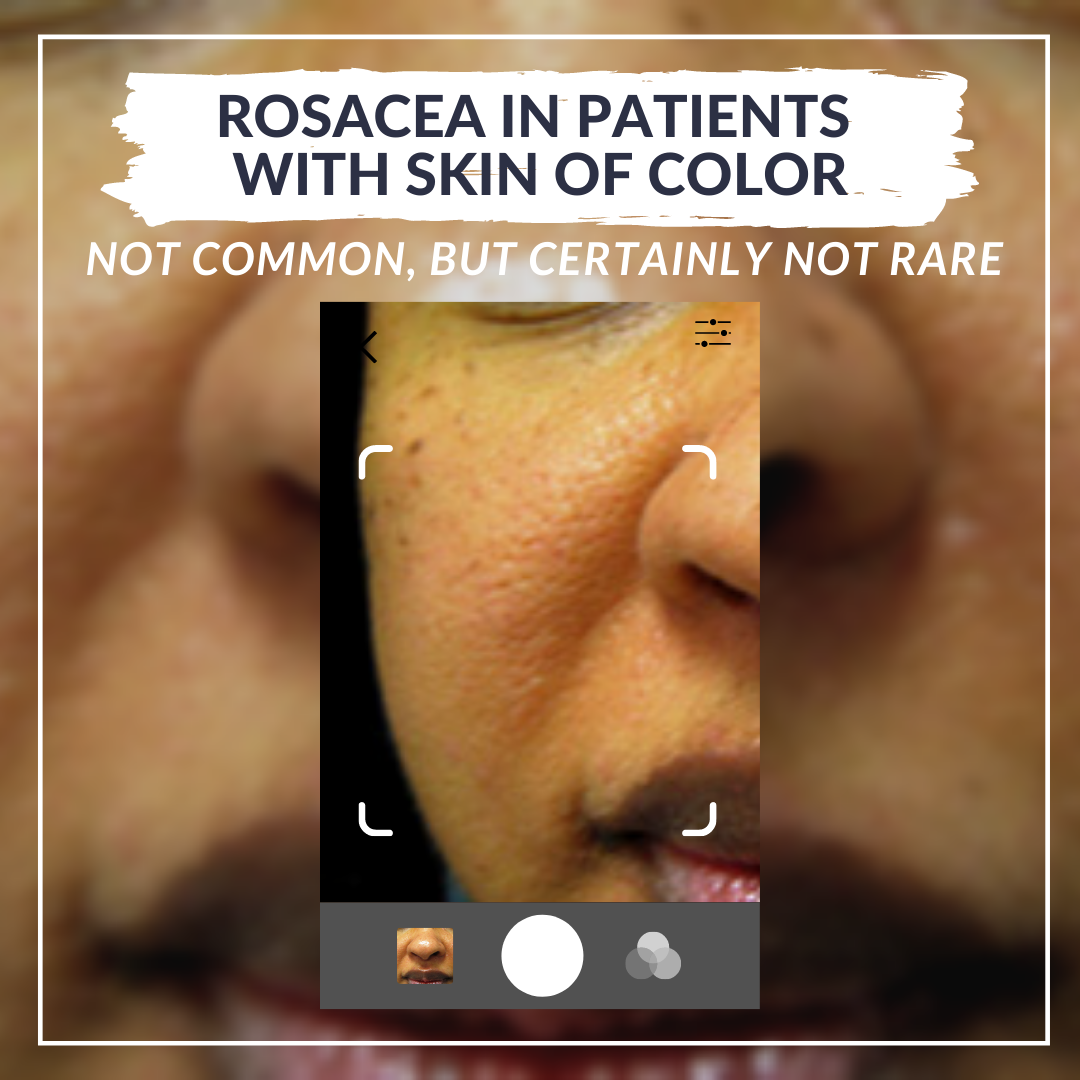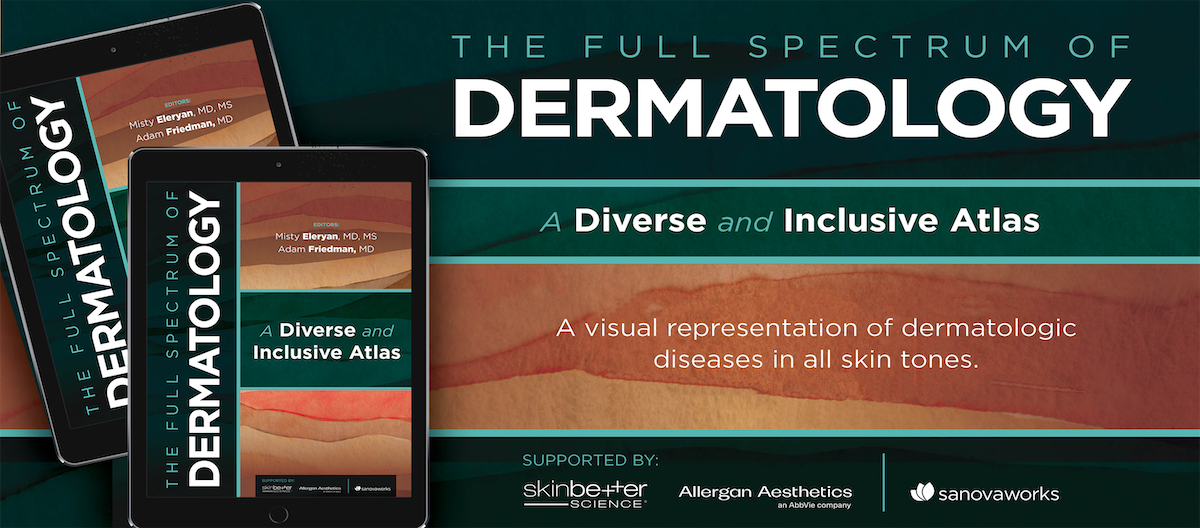Rosacea in Patients with Skin of Color: Not Common, But Certainly Not Rare
 Rosacea is defined by facial erythema and telangiectasias, two features that are more difficult to appreciate in patients with skin of color. To refine our ability to diagnose rosacea in all skin types, on day two of the 2021 Skin of Color Update virtual conference, we had an informative, evidence-based lecture, “Recognizing, Diagnosing, and Treating Rosacea in Patients with Skin of Color,” by …
Rosacea is defined by facial erythema and telangiectasias, two features that are more difficult to appreciate in patients with skin of color. To refine our ability to diagnose rosacea in all skin types, on day two of the 2021 Skin of Color Update virtual conference, we had an informative, evidence-based lecture, “Recognizing, Diagnosing, and Treating Rosacea in Patients with Skin of Color,” by …
 Rosacea is defined by facial erythema and telangiectasias, two features that are more difficult to appreciate in patients with skin of color. To refine our ability to diagnose rosacea in all skin types, on day two of the 2021 Skin of Color Update virtual conference, we had an informative, evidence-based lecture, “Recognizing, Diagnosing, and Treating Rosacea in Patients with Skin of Color,” by …
Rosacea is defined by facial erythema and telangiectasias, two features that are more difficult to appreciate in patients with skin of color. To refine our ability to diagnose rosacea in all skin types, on day two of the 2021 Skin of Color Update virtual conference, we had an informative, evidence-based lecture, “Recognizing, Diagnosing, and Treating Rosacea in Patients with Skin of Color,” by … Continue reading "Rosacea in Patients with Skin of Color: Not Common, But Certainly Not Rare"


 While some celebrities and star athletes are using their platforms to help normalize mental illness, dermatologists may remain hesitant to care for their own mental health.
“The nature of the road traveled to the medical profession and the performance demands placed upon physicians create a deeply ingrained belief that ‘perceived defect or weakness’ can be catastrophic for their careers� …
While some celebrities and star athletes are using their platforms to help normalize mental illness, dermatologists may remain hesitant to care for their own mental health.
“The nature of the road traveled to the medical profession and the performance demands placed upon physicians create a deeply ingrained belief that ‘perceived defect or weakness’ can be catastrophic for their careers� …  We have often been asked, “Why do we need another dermatology color atlas?” Good question, and here’s the answer! We have noticed that there is a paucity of photos of common dermatologic conditions depicted on darker skin. Oftentimes, photos of patients with darker/melanin-rich skin in atlases were those with conditions like keloids or more concerning, STIs. It is no wonder why many of these …
We have often been asked, “Why do we need another dermatology color atlas?” Good question, and here’s the answer! We have noticed that there is a paucity of photos of common dermatologic conditions depicted on darker skin. Oftentimes, photos of patients with darker/melanin-rich skin in atlases were those with conditions like keloids or more concerning, STIs. It is no wonder why many of these …  As dermatologists, we understand that hidradenitis suppurativa (HS) can be a devastating disease that affects all aspects of our patients’ lives, influencing their physical health, ability to be active, and ability to be intimate. This disease disproportionately affects patients with skin of color and unfortunately, treatment can be challenging. We are lucky to have experts who dedicate their cl …
As dermatologists, we understand that hidradenitis suppurativa (HS) can be a devastating disease that affects all aspects of our patients’ lives, influencing their physical health, ability to be active, and ability to be intimate. This disease disproportionately affects patients with skin of color and unfortunately, treatment can be challenging. We are lucky to have experts who dedicate their cl …  My patient asks about turmeric, neem oil, cardamom, etc. I stubble through what I know. I am a “western-style” physician. I could be cast alongside Eastwood or the Duke (or maybe more accurately Cleavon Little in Blazing Saddles). Anyways, if you are like me and need the crash course, look no further! Before this lecture, I had never heard of Ayurvedic medicine (amazing what we don� …
My patient asks about turmeric, neem oil, cardamom, etc. I stubble through what I know. I am a “western-style” physician. I could be cast alongside Eastwood or the Duke (or maybe more accurately Cleavon Little in Blazing Saddles). Anyways, if you are like me and need the crash course, look no further! Before this lecture, I had never heard of Ayurvedic medicine (amazing what we don� …